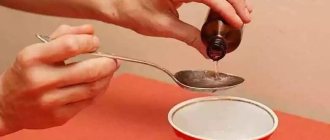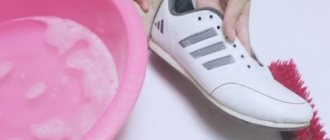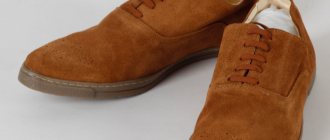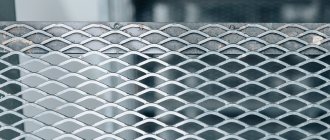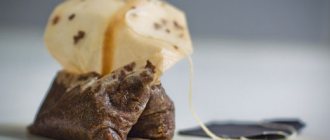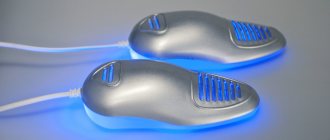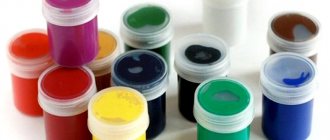How to clean white sneaker soles
Spectacular and beautiful heels have confidently replaced comfortable and trendy sneakers, sneakers and even moccasins. Comfortable shoes with flat soles have long been no longer tied to sports style. A fashion trend for many seasons is the combination of sports shoes, be it sneakers or sneakers, with dresses, jeans, skirts and even trousers. At the same time, the shoes must have an impeccable appearance. Such a small detail as a dirty, gray-spotted or yellowed sole will overshadow the entire look. Let's look at how to clean the white sole of sneakers.
How to clean clothes
Soak a cotton swab in fir oil (you can buy it at the pharmacy) and apply it to the inside of the stained fabric.
Use a second similar piece of cotton wool to wipe the greasy oil stain. The bottom swab will absorb all the dirt and the stain will gradually disappear. Attention! To avoid white scorched spots, never use solvent or acetone!
Also, in hardware stores you can find special products that help get rid of oil stains. In the instructions for these products you can read which materials they are best suited for.
When using industrial chemicals, it is important:
- Read the ingredients carefully (avoid products containing formaldehyde, nitrobenzene, A-surfactants and other harmful substances);
- Be sure to use personal protective equipment (bandage, gloves, and sometimes special clothing);
- Avoid direct sunlight and open flames;
- Follow the instructions and dosages, do not exceed the recommended exposure time of the drug;
- Monitor the expiration dates of household chemicals (immediately get rid of expired products);
- Rinse surfaces thoroughly after treating them with household chemicals, and immediately ventilate the premises.
Washing a dirty car
Paint that gets on the car body causes serious concern and inconvenience to car owners. After all, it is very difficult to remove paint from a car, even small traces of it, without damaging the paintwork of the body. But if you wish, you can try to get rid of unnecessary “artwork” on your car, acting thoughtfully and carefully.
Gentle solvents such as gasoline and white spirit are suitable for removing paint. Some car owners recommend non-standard solutions - treatment with brake fluid or alkaline compounds (sodium hydroxide). When using them, it is important to be extremely careful - treat the stain directly without touching clean areas of the surface, do not leave solvents on the stains for a long time and clean off the paint with smooth cross-shaped movements, without excessive zeal. If there is a subtle change in the color or gloss of the surface, treatment should be stopped immediately and the solvent wiped dry.
Clay for car cleaning (“Willson”, “SONAX”, “ZM”, “Detailing clay”) is a new product on the market of cleaning products for cars. Designed to remove bitumen stains, but also successfully copes with minor paint stains. Purchased from auto stores and used according to instructions.
Cleaning any surface from paint stains is a labor-intensive and complex task that requires a competent approach. Only by studying and choosing the right methods for removing contaminants can you achieve success and return any things to their former appearance - from your own skin to clothes and cars.
How to clean and bleach the soles of sneakers and other shoes: folk recipes
The use of folk remedies is an ideal way to independently clean shoes from dirt and yellowness. For this use:
- toothpaste (powder);
- hydrogen peroxide;
- citric acid;
- a mixture of soda and vinegar with water;
- nail polish remover;
- eraser or melamine sponge.
Toothpaste (powder) is a quick way to clean dirt from rubber soles.
For this method, it is better to choose a composition with a whitening effect without color additives.
- Use a stiff bristle brush and toothpaste to clean the surface.
- Wait 20 minutes.
- Rinse shoes thoroughly in warm running water.
Toothpaste can be used to clean white soles
Hydrogen peroxide
Treat problem areas with hydrogen peroxide (3%). This solution will return the sole to its ideal white color and carefully remove any stains.
Hydrogen peroxide is an excellent tool for whitening the soles of sneakers.
Citric acid or lemon for yellow spots
Citric acid or lemon pulp will help remove the yellowish tint and gray deposits.
- Rub the problem areas thoroughly with powder or pulp.
- Leave for fifteen minutes.
- Wash well with clean water.
Lemon will help remove stains on the white soles of sneakers
Baking soda, vinegar and water - the most popular way to clean anything
There are three options for using baking soda and vinegar to remove stains from rubber.
- Wipe problem areas with a solution of vinegar and water in a ratio of 1:3.
- Prepare a paste of vinegar and soda in a ratio of 1.5:1, apply it with a sponge to the sole. When the mixture dries, wash it off with warm water.
- Thoroughly rub dirt with baking soda using a damp brush, removing dirt from all grooves on the rubber, and then rinse the shoes with water.
A mixture of baking soda and vinegar is an excellent cleaning agent, similar to oxygen bleach.
Nail polish remover or acetone
When using these products, excellent results are achieved, but they have a strong odor, which complicates the work. In addition, there is a risk of damage to the integrity of the sole. Therefore, before cleaning, it is necessary to carry out a quick test: apply the liquid to an inconspicuous small area. If no damage appears, you can use the product.
- Soak a cotton pad with acetone.
- Gently wipe the surface.
- Wash shoes thoroughly with clean water.
Nail polish remover with acetone is a good way to remove yellowish stains from white shoe soles.
Regular office eraser or melamine sponge
You need to use a white eraser that does not leave streaks on the surface when erasing.
- Use an eraser to process the corrugated sole, not missing a single indentation, thoroughly removing yellowness, dirt and black stripes.
- When finished, wipe the product with a clean soft cloth.
There is no need to use water with this cleaning method. For one pair of shoes, you need to take a fairly large eraser, and if the surface of the sole is uneven, you will also need small pieces to clean the thinnest grooves. The hard side of the eraser can damage the structure of the material and leave unwanted marks. For this reason, you only need to use its soft side.
Using a melamine sponge is much easier: wet the sponge, wring it out and wipe the shoes with it. It is softer than an eraser and more pleasant for the hands, but is still a harsher product. This does not guarantee perfect cleanliness if the yellowness is deeply ingrained into the sole, but the shoes will look much whiter.
An eraser can be an assistant in the fight against stains on white soles
How to remove stains from grease, glue, marker, paint
Heavy stains, such as marks from paint, markers, pens, grease or shoe glue, can be removed using the following methods:
- a solution of soda and lemon juice;
- ammonia.
Cleaning procedure:
- Treat the problem area with a solution of baking soda and lemon juice. After this, wash your shoes thoroughly in clean warm water.
- Mix 250 ml of water with ammonia (1 teaspoon). Treat the stain with the solution and wait ten minutes. After this, wipe the shoes with a dry soft cloth.
Grease stains from white soles are removed with ammonia
Clean the soles of sneakers using household chemicals
Household chemicals make it much easier to achieve your goal - to erase all dirt and remove yellowness. Whatever chemical you choose, shoes must first be prepared for cleaning:
- remove the top layer of dried dirt using a damp cloth;
- mechanically clean the sole from large pieces of debris;
- wash in warm soapy water.
- Grate the soap and dilute it with water to form a paste-like mass.
- Using a brush, apply the paste to the sole and rub the stains.
- Let stand for about an hour and rinse well in running water.
Dishwashing liquid is used in the same way.
Laundry soap makes a good product for caring for white soles.
Washing powder does a good job of removing yellowness from soles. To do this, use a mixture of it with vinegar and hydrogen peroxide.
- Mix the powder with hydrogen peroxide and vinegar in equal proportions.
- Apply the resulting mixture with a brush to the surface of the sole.
- Wait 15 minutes.
- Wash with plenty of clean water.
We suggest you familiarize yourself with How to clean light leather jackets
Oxygen-containing laundry detergents contain sodium percarbonate and other similar chemical compounds that easily break down and release oxygen during use. Under its influence, contaminants are oxidized and purified. In this case, no damage is caused to things.
- Soak the soles of sneakers (not higher) in this product for two hours.
- Wash thoroughly with plain water.
Stain remover
You should use a product for white fabrics so as not to disturb the structure of the sole material.
- Rub the sole with stain remover using a stiff bristle brush.
- Leave the shoes for 3-4 hours.
- Rinse the product thoroughly with warm water.
Yellowness from the sole is removed with a stain remover for white fabrics
Bleach will help make the condition of the white sole almost perfect. But it is advisable to use oxygen-containing products. They cope with almost all types of stains: grass stains, iodine and brilliant green, blood.
The reaction of materials to chemical cleaners may vary. To make sure that the chosen product is safe for the sole, you need to apply it to a small, inconspicuous area of the surface and wait a couple of hours. If no cracks or holes form, then you can safely begin work.
- Prepare a solution of bleach and water in a 1:2 ratio in a wide basin.
- Place the shoes in the basin so that the solution covers the sole without touching the top.
- Leave the sneakers for an hour and then check to see if the shoes have bleached.
- If the result is achieved, thoroughly rinse the solution from the sole; if not, put the shoes back in the basin for a while.
- Relief depressions, microcracks and curves can be additionally cleaned with a brush, removing remaining stains of dirt and yellowness.
For practically new shoes, you can use bleaching laundry detergent.
- Mix the powder with water to form a paste.
- Apply the resulting mixture to the sole and wait half an hour.
- Treat the product with a stiff bristle brush, removing dirt.
- Rinse everything off with water and wipe the shoes with a clean soft cloth.
Cleaning white leather sneakers
Soap solution removes dirt best from this material; washing powder with silver ions also performs well.
With its help, you can not only clean the surface, but also disinfect shoes from the inside, which is especially important for sports models. During the operation of the accessory, unsightly folds, abrasions, and creases appear on it; the following methods will help to eliminate them:
The shoes are rubbed with white toothpaste. If your skin texture is rough enough, you can use tooth powder.
The surface is wiped with a cloth soaked in a vinegar solution.
A cleaning paste based on white clay will help you cope with severe stains; it has a mild scrubbing effect, and chemically neutral soap takes good care of the material.
Another way to clean white sneakers is a mixture of hydrogen peroxide and dishwashing detergent.
The solution has a bleaching effect, but it is important not to overexpose it
Leather shoes do not like prolonged exposure to water, so you should not soak them or fill them, all operations must be carried out quickly. The inside of the sneakers can be washed well with dishwashing detergent, powder, or soapy water. Using an old toothbrush, you can reach the most difficult to reach places.
After the procedure is completed, the sneakers are placed so that they drain and excess water is removed. Leather should not be dried near heating devices, it becomes deformed and loses its elasticity. The best option would be paper that needs to be stuffed inside and changed regularly. An alternative method is electric shoe drying; its temperature is low, and the sneakers are well restored without losing their shape.
After drying, the skin should be treated with a special balm, it will reveal the natural texture and protect the surface from harmful influences.
Is it worth trying to wash stains on the soles of sneakers in a washing machine?
The easiest way to clean your favorite shoes is by washing them in the machine. This method does not always give the expected result, and sometimes it can be completely useless and unsafe for shoes. After machine washing, sneakers tear and lose shape much faster.
In addition, there is a danger that the snow-white sole will acquire a yellowish tint and begin to peel off. However, if you still decide to go with a washing machine, then you need to follow a few simple rules.
- Before loading sneakers or sneakers into the washing machine, you must remove the insoles, laces and other removable parts.
- It is necessary to remove adhering dirt with a brush and soapy water and dry. The sole tread should be especially carefully cleaned of small stones and sand, as their entry into the machine can damage the drum, pipe and filter.
- It is strictly forbidden to soak shoes before washing. When dried, it will lose its shape.
- It is better to set the delicate mode with minimal speed and additional rinsing. The spinning and drying must be turned off, otherwise the sneakers will get wet and come apart.
- The optimal water temperature is 40 °C.
- Shoes should be washed in a special bag, and some other things should be placed in the drum to soften the shock during rotation.
It is better to dry sneakers after machine washing in the usual way at room temperature, stuffing them with crumpled newspapers. The paper will prevent deformation during drying and absorb excess moisture. You can also dry your shoes using special dryers.
When the shoes are completely dry, apply a water-repellent agent to them. It is strictly forbidden to dry sneakers and sneakers on a heating radiator or with a hair dryer. This can lead to deformation, the sole will turn yellow and it will be more difficult to bleach it.
Use of special means
To care for white sneakers, you can buy ready-made products. The attached instructions describe how to use them correctly.
Foaming detergent
This is shoe shampoo. Apply the product to shoes using a sponge and rub the surface until foam forms. You can use a brush. After treatment, the foam is washed off with water or wiped with a damp cloth.
Conditioner for leather shoes
The conditioner softens the leather and protects it from cracks and drying out. Clean and dry shoes should be treated with this product. Use a soft cloth to apply to the surface. If there are a lot of scratches on the surface, you can buy a conditioner that is a lighter tone. The product is first applied to the product, allowed to dry, and then polished.
Stain removers and bleaches
To remove stains or dirt, the stain remover is dissolved in water and applied to the sneakers. You can put the shoes in water with bleach for several hours, and then go over the surface with a brush.
We tidy up suede shoes
Shoe paint is made on a nitro base and can be cleaned with acetone or simple nail polish remover. It is advisable to combat contamination with the help of special solvents 646 and 647. The listed products are applied to a clean cloth and thoroughly wipe the area of the surface damaged by paint.
Baking soda and kitchen cleaners can also remove shoe paint from floors (except linoleum). For this cleaning method, soda is mixed with water to form a slurry, then applied to paint marks and left for 5-10 minutes. Then rub with a damp cloth and wipe dry.
Features of the material
The main difference between nubuck and its related suede is the manufacturing method. Suede leather is tanned in a greasy environment, usually using fish products. The technology provides crafted, durable suede of various thicknesses, soft and air-permeable.
The weak point of such shoes is their extremely high hygroscopicity. If light shoes made of soft suede get exposed to rain, they quickly get wet and lose their appearance.
But nubuck is made differently: cow hides are chrome tanned, which ensures increased strength of the finished material. But at the same time, in terms of elasticity, it plays well with suede. Not so simple when it comes to cleaning: you will need special products designed specifically for nubuck products. Otherwise, the relatively short pile quickly becomes “greasy” and leads to loss of the shoe’s exterior.
How not to remove stains from clothes
Unrefined gasoline and unrefined kerosene will leave indelible stains on clothes. They should not be used to remove stains.
How can you deal with the problem?
If you want to find a successful solution to the “colorful” problem, it is possible without resorting to the help of professionals. You just need to remember that paints are different in composition, and each surface has its own characteristics. Therefore, for each specific case it is necessary to choose the right cleaning agent.
Laces and insoles
To return the laces to their original cleanliness, they should be soaked for about half an hour (or a little longer) in a solution of high-quality oxygen bleach. After this, they are washed with simple laundry soap and rinsed.
The cleanliness of the insoles is crucial for the further use of sneakers - sweat molecules and all kinds of microbes, which, due to the active wearing of sports shoes, accumulate on the insoles in huge quantities, can cause not only an unpleasant specific odor, but also the development of difficult-to-treat fungal diseases.
It is best to use laundry soap to wash insoles. They rub the brush thickly with it, and then intensively treat the surface of each insole with it. Now all that remains is to rinse the soap, wait until the excess water drains, and lay the insoles to dry on a flat surface away from heating devices (otherwise they will become rough and severely deformed).
How to wash window glass?
Drops of paint on window glass are a nuisance that often accompanies home renovation work. Fortunately, dealing with it is not particularly difficult.
- Silicate office glue. Allows you to get rid of small splashes of paint. They are generously smeared with glue and left for a while. As the glue dries, it will begin to shrink and pull paint particles behind it, leaving the glass clean.
- Ammonia. Prepare a solution from 1 tbsp. ammonia and 1 liter of water. Use a sponge soaked in the solution to wipe the glass until the dirt is completely removed. Rinse the glass with clean cool water and wipe dry with a cotton cloth.
How to wash black marks and stripes on velor or nubuck
Shoes made of velor or nubuck look great, but require careful cleaning after every trip outside. If we talk about assistants in removing dirt, then the best option is a special brush (these are sold in shoe stores), which must be used to treat the pair daily.
Light-colored nubuck shoes require daily cleaning
To remove traces of dirt and black streaks from the surface, use the means at hand.
Methods for removing dirt from nubuck and velor shoes - table
| Means | How to cook | Mode of application |
| Ammonia | Dilute with water in equal proportions |
|
| Vinegar solution | 1 tbsp. l. 9% vinegar per 0.5 liter of water |
|
| Ethanol | Dilute with water in equal proportions |
|
Once every 1–2 weeks you need to treat velor shoes with a soap solution:
- dilute 1-2 tbsp. l. liquid soap in ½ liter of warm water;
- soak a soft toothbrush in the solution and scrub the surface;
- Wipe your shoes with a soft cloth soaked in cool water.
To remove greasy marks from velor or nubuck, apply a piece of stale bread to the problem area, blot lightly (or just press for 2-3 minutes), and then comb the pile.
How to clean up wet nubuck boots
Bad weather causes two problems with velor shoes: pairs become wet and dirty. The plan of salvation involves action in both directions. Let the shoes dry first. Then use steam to “open” the pile and brush it with a soft toothbrush. You can steam it over a kettle or using an iron. Just keep in mind that you should not touch the hot sole of the device to your shoes.
How to remove an old dried stain?
The basis for success in the fight against old traces of paint on any surface is pre-soaking the stains. As they soften, they are removed more easily and without leaving any traces. Soaking is carried out in several ways:
- Turpentine. Apply liberally to the paint and hold until it “wrinkles” and softens. Then treat the surface with a concentrated solution of baking soda and rinse with clean water.
- Margarine/butter. A small piece of the product is left on the paint for a while, after which it is rubbed with a gauze swab soaked in turpentine, gasoline or kerosene, and the solvents are washed off with water.
How to clean a brush from paint: 13 best products, rules for washing at home
Almost any repair work cannot be done without painting. The consumables in this case are not only paints, but also brushes, which, if desired, can be extended to extend their service life. So, with proper care, any instrument will retain its functionality. In this regard, the question of how to properly clean a brush from paint remains relevant.
Nitro paints
Nitro paints are a finishing material that is characterized by the fastest drying among other paints and varnishes. That is why they are most often applied using a sprayer, but it also happens that craftsmen take up a brush. In this case, the question arises of how to wash the instrument.
Nitrosolvents
Nitro solvents are the simplest and most obvious way to quickly and effectively clean your brush.
These are special products that are designed to combat nitro paint residues. All you need to do is carefully study the instructions for use for the selected drug.
Acetone
Acetone is also used if you need to clean tools from nitro paints. In this option, you do not need to leave it in the solution for a long time. As a rule, you need to wipe the bristles with the composition, then rinse with warm water and leave to dry.
Oily
Despite the fact that oil paints take a long time to dry, they cause brushes to become deformed just as often. So, the composition gets clogged between the bristles of the tool, and if appropriate measures are not taken immediately, it can be thrown away.
Turpentine
In this option, you need to start cleaning the brush immediately after finishing the work. The instrument is wiped to remove paint residues, and then washed with turpentine.
RS-1
This product is aggressive and requires caution when working. Wipe the instrument with thinner, then rinse with water and leave to dry.
White Spirit
The best option for removing oil paint residues is to soak the tool in white spirit. Next, it is washed under running water, wiped, trying to give the bristles their original appearance, and left to dry.
Alkali solution
If oil paints have already dried, use an alkali solution, in particular, we are talking about caustic potassium.
If the brush is made of synthetics, then an alkaline solution for cleaning will not work.
Isopropyl alcohol
Isopropyl alcohol will remove dry paint residue. After cleaning, the instrument is washed and left to dry in an upright position.
Vinegar
The tool is soaked in vinegar for 60 minutes, after which the condition of the bristles is checked. If the bristles are not yet soft enough, repeat the procedure. Next, the brush is washed in clean water and left in an upright position until completely dry.
Dishwashing liquid
They try to squeeze out as much paint as possible from the brush using a paper towel or cloth. Next, pour a small amount of dishwashing detergent onto your hand, and then wash the bristles under warm water.
Water-based
Water-based paint is easier to clean. It is advisable to wash the brush under running water immediately after use. If the paint has already dried on the instrument, it can be easily removed using available means: kitchen utensil cleaner, soap.
Acrylic
To avoid problems with cleaning brushes, you should use water-based paint liquids: acrylic, watercolor, latex. Next, we will consider several proven methods for cleaning tools from residual ink.
Degreaser
The use of degreasers is important in a situation where the instrument has been in paint for a day and a film has formed on it.
The algorithm for using the drug is indicated on each individual product by the manufacturer.
Special cleaners
Most often, a universal cleaner is used to clean brushes, which is intended for degreasing coatings.
The product contains alcohol and gasoline.
Brush care rules
To extend the life of your brush, you should adhere to the following rules:
- The brush should be dried exclusively in a horizontal position.
- Do not leave the instrument in water with the bristles pointing down.
- It is recommended to put an elastic band on the bristles so that the tool dries in the correct position.
- If after cleaning there are loose bristles on the brush, you should remove them with tweezers.
- If oil paints are used daily and cleaning your brushes becomes a chore, you can try wrapping your tools in a Ziploc bag. The fact is that if you leave your brushes constantly in solvent, their service life will be significantly reduced.
Plastic, laminate, linoleum, tile
Quite durable if properly cared for, linoleum and plastic can suffer serious damage if paint gets on them. If the stains were left behind by water-based compositions, there is no need to worry; they are easily washed off with water, leaving no traces. Oil paint stains must be removed very carefully, using mechanical or chemical cleaning methods. So, how to remove paint from linoleum?
If drops of paint have not yet dried, just remove them with a clean rag or paper. Dried marks must first be soaked by placing a cloth soaked in vegetable oil on the stain. After 15-20 minutes, the paint layer is slightly lifted with a construction scraper, spatula or simply a knife and carefully removed from the surface to be cleaned.
We suggest you familiarize yourself with How to remove old paint from walls: how to quickly remove acrylic, oil and water-based paint from concrete, wood and other coatings?
To remove paint from plastic, household solvents will come to the rescue - alcohol, white spirit, acetone and specialized compounds - solvent 646, HAMMERITE solvent and cleaner, KUDO old paint remover and others. Use according to the instructions on the package.
Acrylic paint is not easy to wipe off a surface once it has dried. Fresh stains can be treated with water and laundry soap (or Antipyatin soap). The only way to get rid of a stubborn stain is to buy a special remover.
When purchasing, consult with the seller, telling him the brand of acrylic paint you are using.
The cleaner has a pungent odor; open the windows in the room before use. How or with what to remove old paint from bathroom walls? Do not be afraid to treat plastic surfaces; the substance does not react chemically.
Do not use solvent on colored upholstery.
Water without added detergents will help clean hands, hair, carpeting, plastic and wood.
Oil-based paint is washed off with special solvents or vegetable oil. Solvents are safe to use on linoleum, some types of fabrics and tiles. Tile, like glass, is not afraid of exposure to even the harshest chemicals.
To remove paint and varnish from a plastic window sill, use vegetable oil or warm glycerin. The solvent will leave a matte stain in place of the dye.
What and how to wash?
Before you start washing your white sneakers, there are some important things to understand. Thus, machine washing is contraindicated in the following cases:
- fabric sneakers have damage on the upper or sole,
- products are inexpensive, not very high quality,
- leather sneakers,
- they contain small fragile parts (reflectors, for example),
- The washing machine does not have (or does not work) the “Sport”, “Delicate Wash” mode or the option to turn off spinning and drying: washing in the normal mode is strictly prohibited for such shoes.
In addition, depending on the composition of the textile, yellow spots and streaks may appear after washing with regular washing powder, especially when using conditioner. Therefore, to wash sports shoes, it is best to use powdered laundry soap or oxygen bleach.
How to wash PF 115 paint?
Since the paint has dried, first try to scrape off the top layer of paint, you can use a knife (like a construction knife, for example, this is a knife with replaceable blades), or a blade. Next, moisten the stain with white spirit (from the edges of the stain to the center), and moisten the stain with water.
Interesting materials:
Where are the deadlines for paying salaries stated? Where is the highest average salary? Where are the highest salaries for doctors? Where are the high salaries in Russia? How should wages be paid according to the Labor Code? How is a teacher's salary determined? How to index salaries in 2022? How is a pension calculated from salary? How are teachers' salaries calculated in Kazakhstan? How are teachers' salaries calculated in rural areas?
What is harmful to artificial leather?
The natural material from which shoes, clothing, and furniture upholstery are made is durable and elastic, but is expensive, and animals are killed for its production. The basis for eco-leather is cotton fabric, onto which polyurethane is applied.
High humidity
Eco-leather does not allow water to pass inside. The machine is not suitable for washing products made of two-layer material; the dirt on them is not washed off with water. Strong humidity has a negative effect on fabric.
Heat
Eco-leather allows heat to pass through well, products made from it do not fade in the sun, but they overheat strongly; washing in hot soapy water is not recommended.
Cleaning with a steam generator
Synthetic fabric with a polyvinyl chloride coating is not inferior in technical characteristics to leather, looks similar to natural material, but if not properly cared for, it loses its attractiveness. You cannot clean products made from it with a steam generator.
Abrasives
If you wipe eco-leather with a hard brush or pumice stone, scratches, microcracks, and small cuts appear on the surface. The fabric is damaged when cleaning with abrasive materials and does not tolerate chlorine.
Daily care rules
Furniture upholstery and clothing made from light eco-leather remain attractive and do not wear out for a long time if the products are regularly and properly cared for:
- Remove dust with a damp cloth.
- Wipe off dirt with napkins made of calico, microfiber, or flannel.
- Treat with a water-repellent compound every 6 months.
- Polish to restore shine with creams intended for natural leather.
When cleaning stains, do not press on the surface of the car seat cover or upholstery. A sofa or chair made of two-layer material should be installed away from radiators, making sure that direct rays of the sun do not fall on things.
Recommendations and prohibitions
To effectively wipe off any type of dye from the skin, the following must be considered:
you need to try to remove the mark as quickly as possible before the dye dries;- Do not etch paint stains on your face with solvents;
- it is necessary to wipe off dried traces of oil paint on hands and feet with solvents;
- before removing dried paint from the skin, you must first soften it with warm water for 10-20 minutes;
- It is recommended to wipe off any fresh paint with warm soapy water;
- You should use pumice stone and a toothbrush when scrubbing away dyes.
After any treatment of the skin with various means, it is necessary to wash it thoroughly with warm water and soap, and then use a moisturizer. It will soften the skin and prevent irritation from occurring on it.
How to remove a paint stain on your face?
There are several known methods for solving this problem. Please note that facial skin is very delicate. At the same time, she is always in sight.
How to remove hair dye from face? If all precautions do not work, you need to use the following gentle methods:
If the stain is fresh, you can use baby soap. Apply to a sponge and gently work over the stained area. The procedure is usually repeated 2-3 times. You can remove paint stains with a lotion that contains alcohol. Apply it to a cotton pad and treat the contaminated area of skin. After removing the stain, dryness may appear. It is recommended to apply moisturizer to the skin. In order to get rid of stains, you can prepare a specific mask. You can apply a little olive, linseed or vegetable oil to the stain. Leave for 20 minutes and rinse with warm water. When removing a stain with baking soda, an unpleasant sensation sometimes appears on the skin. The product is diluted with water in equal proportions
The scrub is applied to the contaminated area and left for 3-5 minutes, then carefully washed off
How to remove hair dye from hands and other parts of the body? When removing stains from the face, especially with baking soda, precautions should be taken. It should not come into contact with the eyes.
And also, there is no need to intensively rub the contaminated area, because otherwise it may turn red.
Skin of hands and face
Carrying out painting work without individual skin protection will certainly manifest itself in splashes of paint on the face and stains on the hands. You need to deal with them carefully, using washes that are gentle in composition. How to remove paint from the skin of your hands or face?
A time-tested product that gently removes oil paint from the skin. You just need to wipe off traces of paint on your face and eyebrows with a cotton swab generously dipped in vegetable oil. If your hands are dirty, you can wash them by pouring the oil directly into your palm, rubbing thoroughly and rinsing with warm water and soap.
Designed to eliminate color defects in eyebrows and hair, but can also be used to combat other types of coloring compounds. They remove water-based paint, acrylic paint and small drops of oil paint well. Use according to instructions.
A fairly strong solvent, which is not recommended for cleansing facial skin. The skin on your hands is less sensitive, and paint stains on them can be wiped off by blotting the contaminated areas with cotton wool soaked in acetone. If the paint comes off poorly, you need to take a short break and repeat the procedure after 30-40 minutes, otherwise skin irritation, even burns, cannot be avoided.
We wrote about how to remove hair dye in this article.
When painting windows or walls, oil-based or water-based paint can seep through gloves and get on your hands. If you move the brush carelessly, drops can get on your face and hair. After painting your head, a dark or red stripe may remain on the forehead or temples.
To wash marks from the skin, you need to pay attention to the composition of the material.
To remove oil-based paints and varnishes, solvents (white spirit, gasoline, turpentine) are used. These liquids dry out the skin, and in rare cases an allergic reaction may occur. It is safe to remove stains from skin using olive or sunflower oil.
Rub the dirt with a cotton pad soaked in oil until it disappears completely.
It's easy to wash off acrylic paint from the body before it dries. To do this, just wash your hands with soap and warm water. For dried stains, try soaking them in warm water for 15 minutes.
If soaking your hands doesn't help, use fine-grained pumice. Stains on the face can be washed by applying a cotton pad soaked in soapy water to them. The water-based emulsion is washed off the skin with ordinary laundry soap.
How to remove tar from a car
We take a dry rag and soak it in gasoline, then rub it over the stains from tar or bitumen. We wait about 3 minutes and wash off the stains from the body with the same rag. The paintwork of modern cars is quite durable, so don’t be afraid to use gasoline. The main thing is that the coating is not damaged before and during such treatment. Therefore, do not allow sand or other abrasive material to get on the cloth.
If your car is not new or you are still afraid to use gasoline, then modern chemical manufacturers offer you a wide range of special products taking into account all the features of car coatings. Sales consultants at any industrial chemicals store will promptly select the necessary product for you.
Wash away stains from the spray can
Aerosol paint today is widely used by both street graffiti artists and serves as a worthy alternative to conventional materials for painting work. How to remove paint from a can? Most paint cans contain varnish, so it is difficult to wash them with plain soap and water. To remove traces of aerosol paint, you need to use chemical solvents.
- Alcohol, acetone, refined gasoline, white spirit. To obtain a good effect, apply a clean cloth soaked in solvent to the problem area of the surface and leave for 5-10 minutes. Then remove the paint with a dry cloth or paper, rinse the surface well with water and wipe dry;
- Specialized solvents 647 and 650. You can purchase them at a hardware store. The operating principle is similar to the previously described solvents;
- Professional anti-graffiti products. They are used mainly in car washes to remove traces of aerosol paint from car bodies, but can also be used to clean other surfaces, even wood. These can be “GraffiGuard” (), “Antigraffiti” (GRASS), Anti-Graffiti (“Clean”) and many others - the choice is quite wide.
What do we need
The task was set: to clean nubuck weekend shoes at home. You will need: a can of foam or spray, a brush, an eraser and a little ingenuity. The products are applied alternately, depending on the degree of contamination and the expected effect. It is also possible to use improvised methods, which will be discussed separately.
Impregnation in the form of an aerosol
The initial stage involves treating nubuck with aerosol impregnation. Sprayed from a can, dries quickly, leaving a protective hydrophobic layer on the surface. Of the well-known and eminent ones, Salamander is used, there are also simpler options - Shtrikh, Centro, Erdal.
Cleanser (foam)
A relatively simple way to restore the exterior of nubuck boots. The consistency is similar to shaving foam. It is applied to the surface to be treated, then the active reagent binds dirt particles, “knocking” them out of the pile. All you have to do is wait for the foam to dry, and then clean the nubuck with a special hard brush.
Spray paint for nubuck shoes
Among the manufacturers are the famous Salamander, Centro, Erdal
It is important not to confuse the color of the shoes and the color of the aerosol, so as not to hopelessly ruin the shoes. There are no universal (colorless) dyes; specific instructions and recommendations are indicated on the container with the composition
Eraser
A special rubber band will help remove dirt from shoes and restore lint. Work with an eraser on a dry surface, systematically wiping away foreign inclusions.
Sometimes this helps to avoid the use of radical cleaning agents when the shoes are not too dirty or worn.
Special brush
Let's make a reservation right away: we are not talking about toothbrushes, old clothes or anything else like that. You will need special products - with rubber or metal bristles. By the nature of its effect, the brush resembles the abrasive that initially creates the structure of nubuck: it also restores the pile and removes stubborn dirt.
Shoe deodorant
A special product allows you to get rid of unpleasant odors and clean the inside surface of your shoes. The appearance of a specific amber is associated with various reasons: the habit of wearing boots, shoes on bare feet, excessive sweating, and so on. The deodorant eliminates odors and restores shoes to their original condition.
How to clean makeup brushes
1. Baby shampoo
For many years I have been washing my brushes with baby shampoo. During all this time, they did not lose their shape, but, on the contrary, retained it.
How to wash makeup brushes with shampoo
First, squeeze a drop of baby shampoo onto a cotton swab. Carefully dip the brush into the detergent. “Twist and twirl” on the palm until the bristles of the brush are clean. Rinse with water.
Bottom line: this method is suitable for brushes that only you use. If you work as a makeup artist, then you definitely need to disinfect your brushes! And the next option is just for you.
2. Special products for cleaning brushes (Makeup Brush Cleaners)
Similar liquids can be found in every brand. This applies not only to professional, but also luxury brands, for example:
- Bobbi Brown Conditioning Brush
- Clinique Makeup Brush Cleanser
- Estee Lauder Makeup Brush Cleaner
- Mac Cosmetics Makeup Brush Cleanser - I use it to wash my “working” brushes (read the review here).
How to wash your brushes with a special brush cleaner
I talked about this in detail in the article “How to wash brushes using a special product”
Bottom line: the difference between these products is that they contain alcohol, which is necessary for disinfecting brushes!
If you are afraid that alcohol will have a bad effect on the pile, then this is not so. A certain amount of alcohol has long been calculated in such products and believe me, they are not intended to destroy brushes, but only to disinfect them.
3. Tea tree oil
It has been noticed that tea tree oil has antibacterial properties, although not as strong as previous products.
How to Clean Your Brushes with Tea Tree Oil
- Add 3-4 drops of tea tree oil to a container of warm water.
- Lower the brush and rinse.
- To make sure your brushes are clean, you can add one teaspoon of baby shampoo.
Bottom line: I have never tried this cleaning method, but I have heard about it as the most positive method.
4. Wipes or makeup remover as a way to clean brushes (Makeup Remover Wipes)
This method is convenient when traveling when you don’t have any oil, special product, or baby shampoo on hand! I am sure that not a single girl will forget to take makeup remover on a trip. This is exactly what will help your brushes out.
How to Clean Your Brushes Using Makeup Remover Wipes
- Soak a cotton swab in makeup remover
- Run the brush over it a couple of times until it's clean.
- The same can be done with napkins - using circular movements of the brush until completely clean.
5. Laundry soap
The only product that completely removes creamy textures from your brushes! This applies to watercolor paints, waterproof cream eyeshadows and foundation.
How to clean brushes with laundry soap
- Swipe the brush over the soap a couple of times
- Using circular movements on the palm, cleanse.
- Rinse with water.
Bottom line: I am completely calm about the condition of the brushes after this method of cleaning, since when working with cream textures you are only dealing with synthetic, not natural bristles. This is the only soap I can use to wash my brushes after creative makeup.
How to dry makeup brushes
- After you have washed your brushes, do not place them immediately in a glass, otherwise water will get into the fastening area and dilute the glue! Result: the handle fell off.
- Place them on a previously laid out napkin on the table. I use kitchen paper towels.
- Wash your brushes at least once a week. If you have rashes and other skin problems, then try to wash them much more often, at least every other day.
Gossip
- They say that brushes that have lost their shape can be brought back to life by keeping them in water at 90°C. about 3 minutes.
- They also say that you can disinfect brushes with chlorhexidine, as one of the cheapest options.
I haven’t tested these options because I don’t want to risk the brushes that I love very much and treat them with care.
Conclusion: It’s up to you how long your makeup brushes will last you. Choose cleaning products depending on the task you are facing. Dry them properly and keep them clean.
Removal nuances depending on the type of dye
Hair dye is best wiped off the skin with alcohol-containing solutions. Special lotions and facial tonics are suitable for this.
An alternative could be vodka. You can use medical alcohol, but not too concentrated. It must be diluted with water.
Hair dyes are also easily removed from the skin:
- lemon juice;
- olive oil;
- vinegar;
- hydrogen peroxide.
The last two products should not be applied to the face. It is better to use peroxide to remove paint from your hands or feet. It is enough to moisten a cotton swab in it and wipe the dirt with it.
There are special removers. They are designed to remove hair dye marks from the skin. These are products under the brands “Estelle”, “Kapous”, “Wella”, “Galacticos Professional”.
Other types of paints have the following removal nuances:
- Oil paint is best wiped off with strong solvents. White spirit and turpentine are more suitable. You can use gasoline or acetone to cleanse the skin on your hands and feet. Such solvents can provoke allergic reactions. Therefore, they cannot be applied to the face. You can wipe off fresh oil paint from your face with olive oil.
- Fresh acrylic paint is quite easily washed off the skin with warm soapy water. Dried paint is pre-soaked with warm water for 20 minutes. Then it should be scrubbed with pumice. It is better to use its fine-grained version.
- Water-based paint is easily washed off from the skin with a solution based on laundry soap. Ink should be scrubbed with scrubs and hydrogen peroxide. For cleaning, it is recommended to use a pumice stone or a toothbrush.
